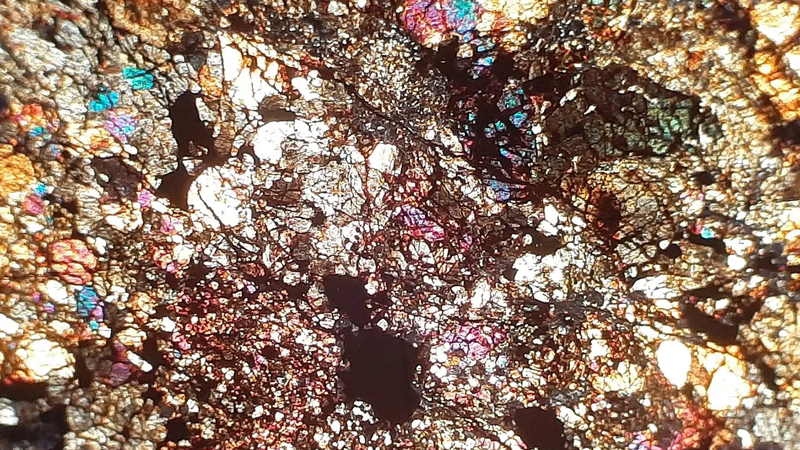
Meteorite fragments offer insights into space origins and geology.
A meteorite is a solid object that originates from outer space and survives its passage through the Earth's atmosphere to reach the Earth's surface. It is a fragment of a meteoroid, which is a smaller object in space, typically composed of rock or metal, that orbits the Sun. When a meteoroid enters the Earth's atmosphere, it undergoes intense heating and friction, causing it to burn up and create a bright streak of light, known as a meteor or a shooting star. If a meteoroid is large enough and can withstand the atmospheric forces, it may reach the Earth's surface as a meteorite. Meteorites can vary in size, ranging from tiny fragments to larger objects weighing several tons. They can be composed of various materials, including rock, metal, or a combination of both.
Meteorite enthusiasts and scientists often engage in meteorite hunting. They search for meteorites in areas where falls or finds have occurred, such as deserts or regions with less vegetation. Advanced metal detectors, visual observations, and magnetic surveys are among the methods used to locate meteorites. A meteorite is a fragment of a space body that falls to the surface of our planet after passing through the Earth's atmosphere. The term also applies broadly to similar objects that fall on the surface of other planets and other large celestial bodies. These bodies are space rocks that were torn from the surface of other bodies and fell on Earth, and we call these rocks "meteorites" or "sky stones". Meteorites contain amounts of metallic elements such as pure iron, and studying these heavenly stones is one of the most important methods of obtaining information regarding the formation of the solar system, such as planets, moons, and other smaller objects.
Meteorites are classified as either "falls" or "finds." Meteorite falls are witnessed events in which people observe the meteorite entering the Earth's atmosphere and landing. Meteorite finds, on the other hand, are objects discovered on the ground, and their origin is often unknown. Some meteorite finds may have been on Earth for thousands or even millions of years before being discovered. Usually, these stones are not much different from the stones found on the earth, but when meteorites fall on the earth, they pass through the earth's atmosphere at a high speed, and their entry into the earth's atmosphere causes them to burn and a crust called "burnt crust" forms on the stone. is formed and this is one of the main characteristics of meteorites. Identifying meteorites is an easy task for scientists. They can distinguish meteorites from other stones by several methods. There are three types of meteorites: stony, iron and stony-iron. Each of these has specific characteristics.
Meteorites are of great scientific importance. They provide valuable information about the early solar system, planetary formation, and the geology of other celestial bodies. Scientists study meteorites to understand the processes that led to the formation and evolution of planets, asteroids, and other objects in our solar system. They can also shed light on the origin of water and organic compounds on Earth. An asteroid is a small rocky body that orbits the Sun. A meteorite is a small fragment of an asteroid or a comet that enters the Earth's atmosphere while burning up. When meteorites enter the atmosphere of the earth or another planet like Mars at a high speed and burn up, they are called meteors, which we also call comets. Sometimes meteors can even appear brighter than Venus, which is when we call them fireballs. Scientists estimate that about 48.5 tons (44,000 kg) of meteorite material falls on Earth every day.
The impact of a meteorite can vary widely depending on its size, speed, and composition. Smaller meteorites often create small craters or holes upon impact, while larger ones can cause significant damage and create larger impact craters. Meteorites can have diverse compositions. Stony meteorites are primarily composed of silicate minerals such as olivine, pyroxene, and feldspar. Iron meteorites consist mostly of iron-nickel alloy, with traces of other elements like cobalt and phosphorus. Stony-iron meteorites contain a mix of silicate minerals and metal. When a meteorite lands on Earth, it is often accompanied by a loud sound, known as a sonic boom, and can create a small crater upon impact. Scientists study meteorites because they provide valuable information about the composition and history of the solar system. They can contain clues about the formation and evolution of planets, asteroids, and other celestial bodies.
-
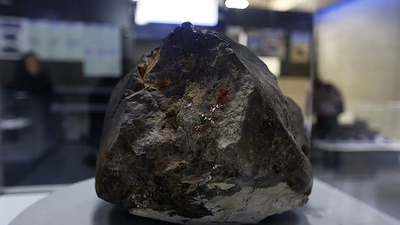
Exporting meteorites requires thorough understanding of legal requirements in both the exporting and importing countries. Each nation may have specific regulations, especially for meteorites deemed national treasures or of scientific significance. Obtaining necessary permits, such as export licenses and certificates of authenticity, is crucial. Cultural heritage considerations can also impact the export process, as some meteorites may be restricted from leaving their country of origin. The market value of meteorites varies significantly, with prices ranging from one dollar to thousands, depending on rarity and demand among collectors. While most meteorites found are common chondrites with low value, rarer specimens like Martian or lunar meteorites can fetch high prices. Proper packaging and shipping methods are essential to protect these valuable items during transit. Engaging with experienced professionals can help navigate the complexities of export regulations and ensure compliance with customs requirements. Additionally, understanding the import regulations of the destination country is vital to avoid complications upon arrival.
-

Meteorites are solid objects from outer space that survive their passage through Earth"s atmosphere to reach the surface. They originate from meteoroids, which are smaller space objects composed of rock or metal. When a meteoroid enters the atmosphere, it burns up, creating a meteor or shooting star. If it is large enough to withstand atmospheric forces, it lands as a meteorite. Meteorites vary in size and composition, including stony, iron, and stony-iron types. Meteorite hunting is popular among enthusiasts and scientists who use advanced detection methods to locate them in areas with fewer vegetation. Meteorites are classified as "falls" or "finds," with falls being observed events and finds being discovered objects of unknown origin. They provide crucial insights into the early solar system"s formation and planetary geology.
Studying meteorites helps scientists understand processes related to the evolution of planets and the origins of water and organic compounds on Earth. Approximately 48. 5 tons of meteorite material falls on Earth daily, with impacts varying based on size and speed. Smaller meteorites create minor craters while larger ones can cause significant damage. The study of meteorites is essential for understanding the solar system"s history. "
-
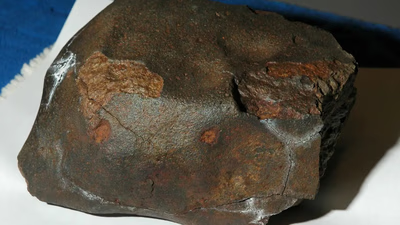
Meteorite hunting captivates many enthusiasts, often leading to a passionate pursuit. The excitement of finding a meteorite can overshadow the reality that initial success may be due to luck. Meteorites, which are remnants of celestial bodies that survive atmospheric entry, are categorized into three types: iron, stone, and iron-stone. Statistically, four meteorites fall per square kilometer on Earth every 50,000 years. In Iran alone, this suggests millions of meteorites have fallen over time. However, many have eroded or become indistinguishable from terrestrial rocks. Iron meteorites are easier to locate due to their resistance to weathering and distinctive appearance. While meteorites can theoretically land anywhere on Earth, searchers often target areas with minimal geological disturbance for better chances of discovery.
Most meteorites fall into oceans or become part of the Earth"s crust through weathering. Notably, Antarctica serves as a significant site for meteorite collection, with thousands discovered by international teams since 2000. "
-
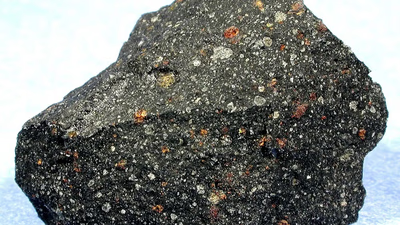
Meteorites are primarily composed of iron-nickel metal, which gives them magnetic properties. A strong magnet can help identify potential meteorites, but this method is not definitive as some terrestrial rocks also exhibit magnetism. Meteorites typically have a fusion crust formed during atmospheric entry, which can appear smooth or textured. Identifying meteorites involves assessing their mineralogical, physical, and chemical characteristics, with advanced techniques like thin section analysis providing more accurate results. Common indicators of meteorites include unusual shapes with regmaglypts—thumbprint-like impressions—and high density compared to terrestrial rocks. Despite many people believing they have found meteorites, less than 1% of discovered stones are actual meteorites. The identification process requires careful examination and often consultation with experts or professional dealers who can perform detailed analyses.
-
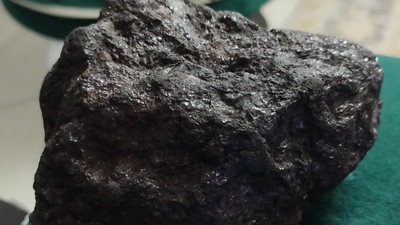
Buying and selling meteorites online presents both opportunities and risks. Authenticity is crucial, as many sellers may offer counterfeit items. Buyers should seek reputable sellers who provide detailed information about the meteorite"s origin and classification, along with supporting documentation like certificates of authenticity. Researching the seller"s reputation is essential to avoid scams. Meteorite prices can vary significantly based on rarity, size, and condition, so understanding market values is important. Legal considerations also play a role; some countries have regulations regarding meteorite collection and exportation. Buyers should be aware of these laws to ensure compliance. The condition of the meteorite affects its value; pristine specimens are often more sought after than those with visible features.
The rise of online platforms has transformed how meteorites are traded, making it easier for buyers and sellers to connect but also increasing the risk of fraud. Therefore, thorough research on both the product and the platform is necessary before any transaction.





